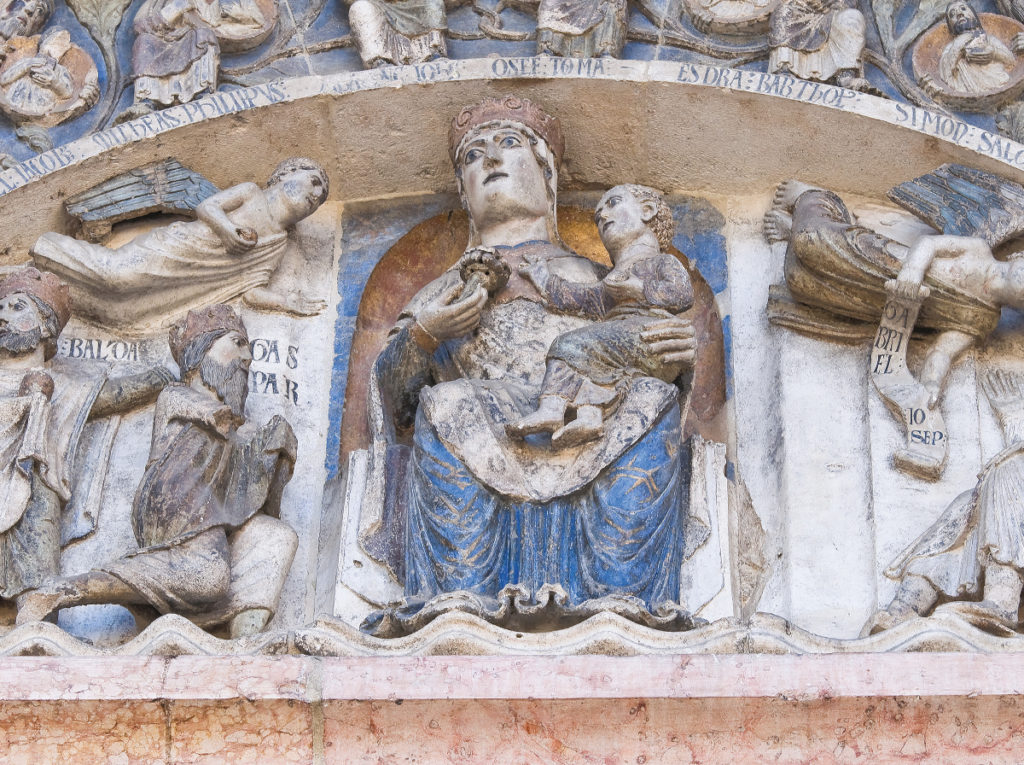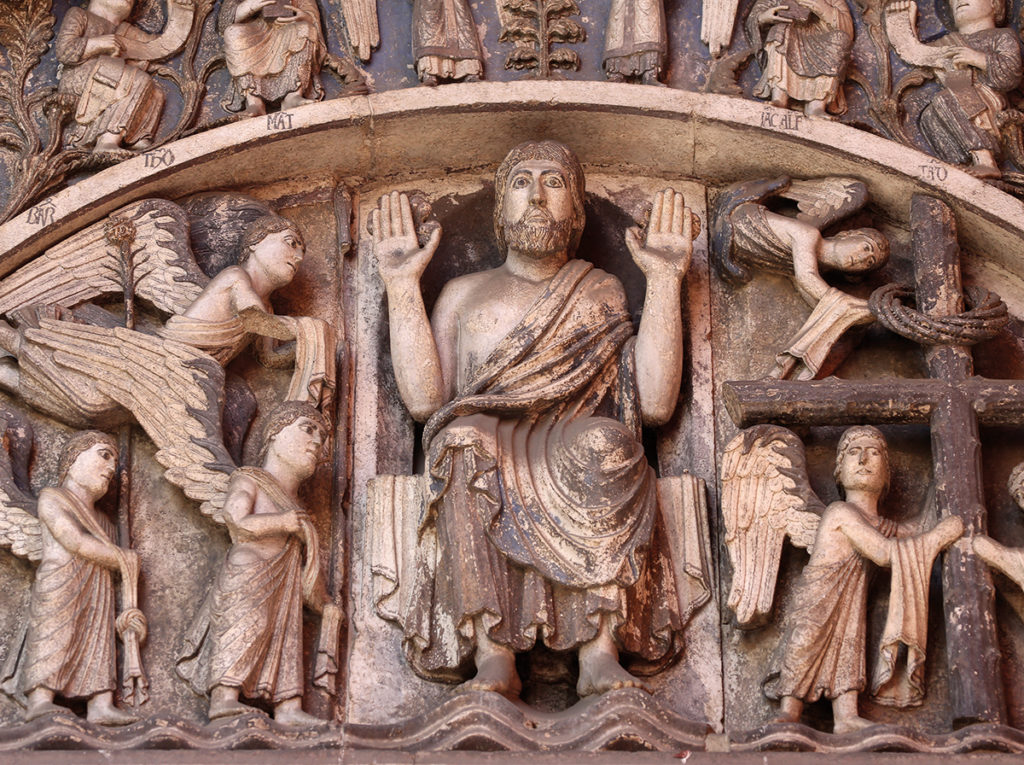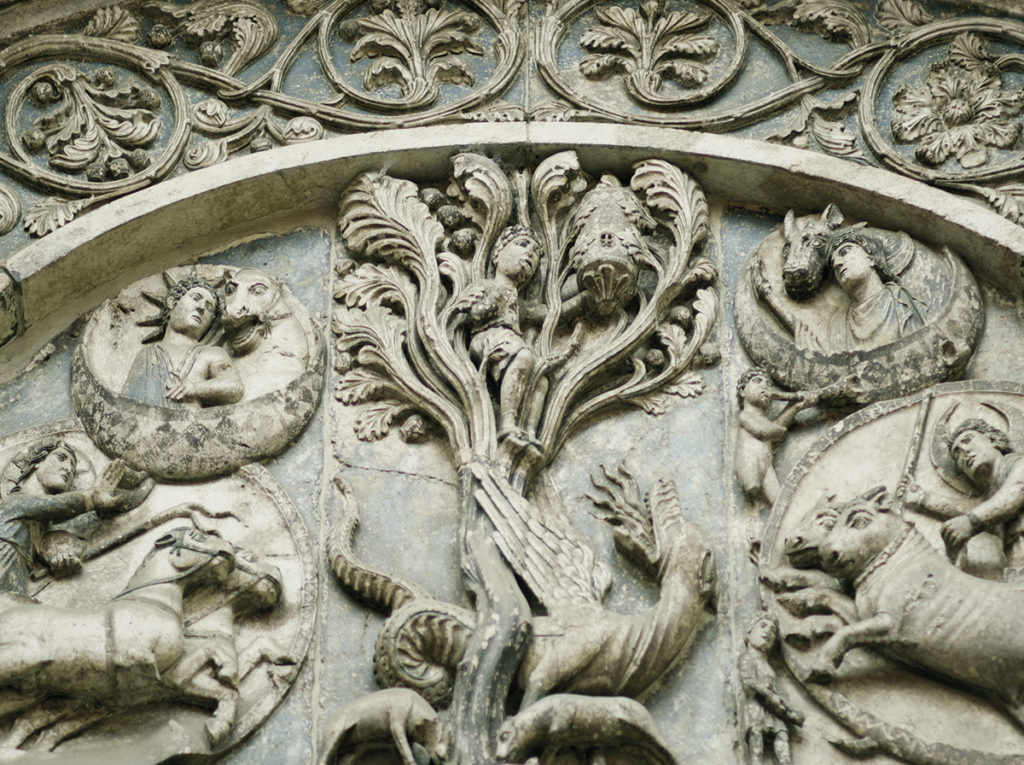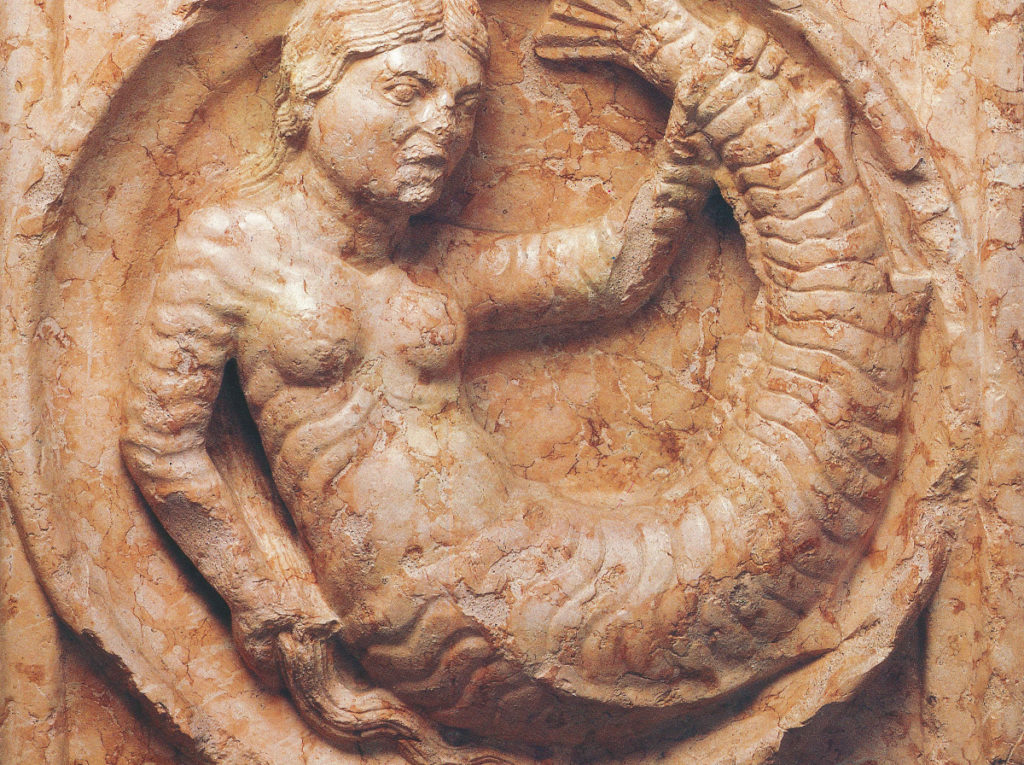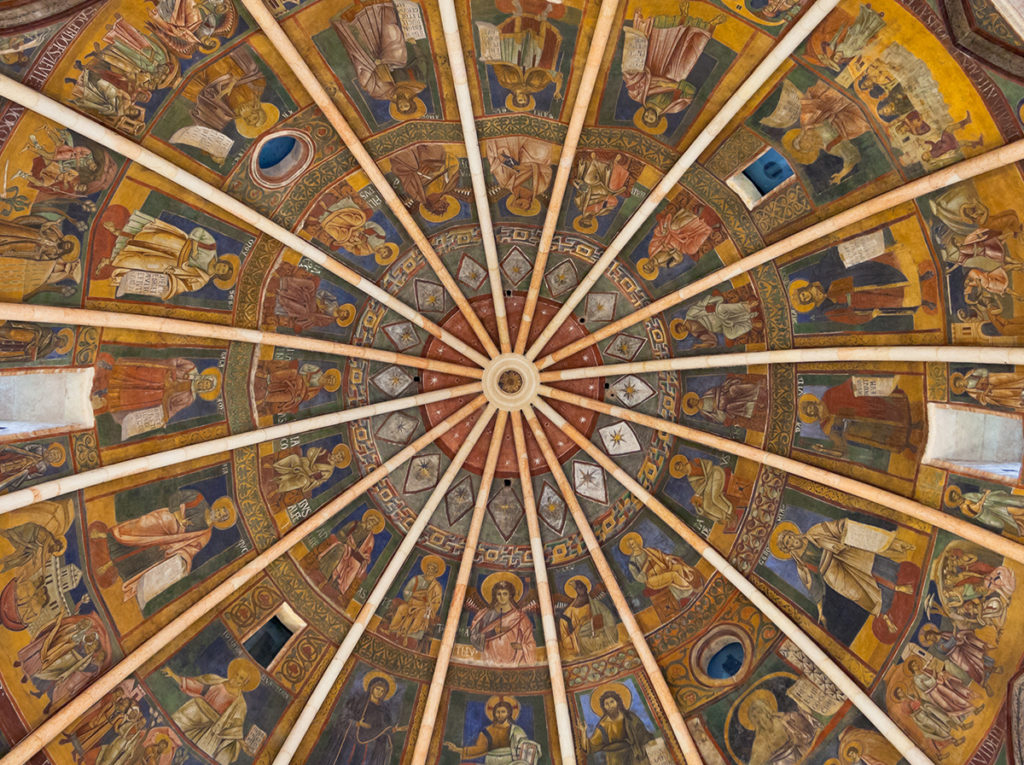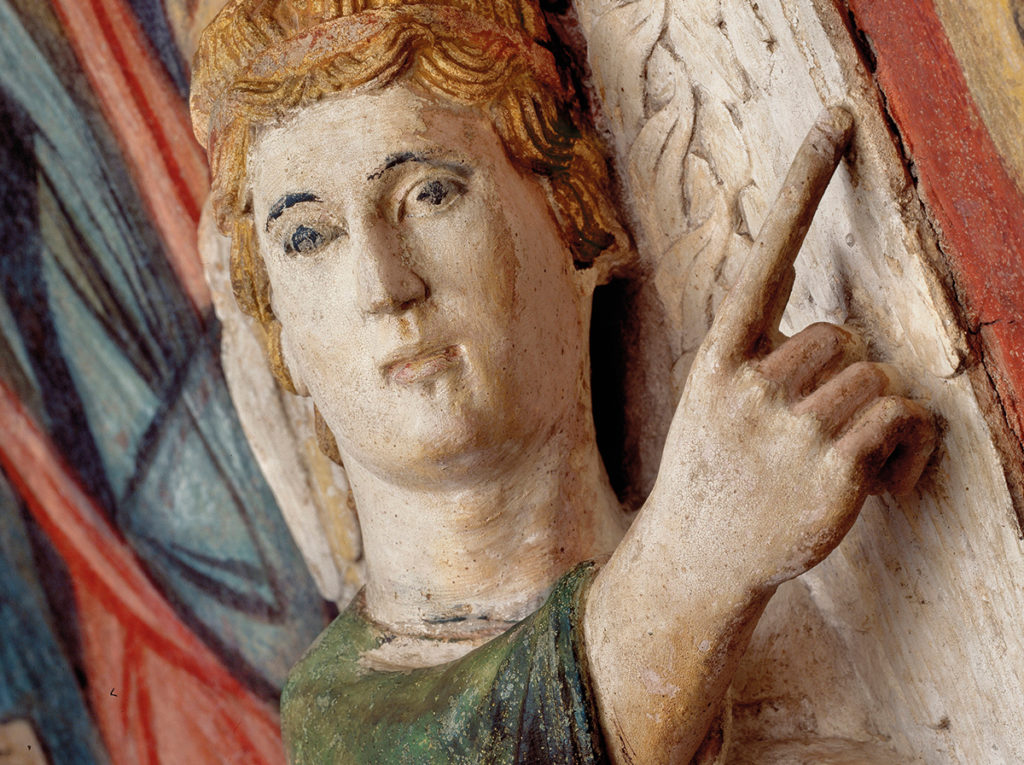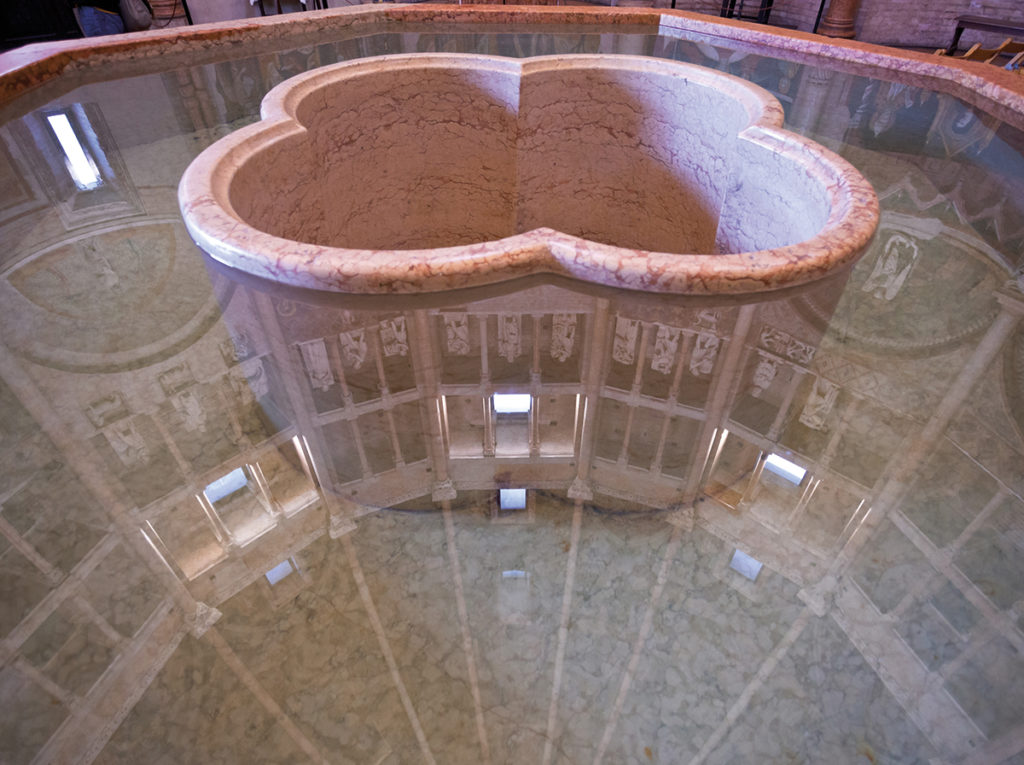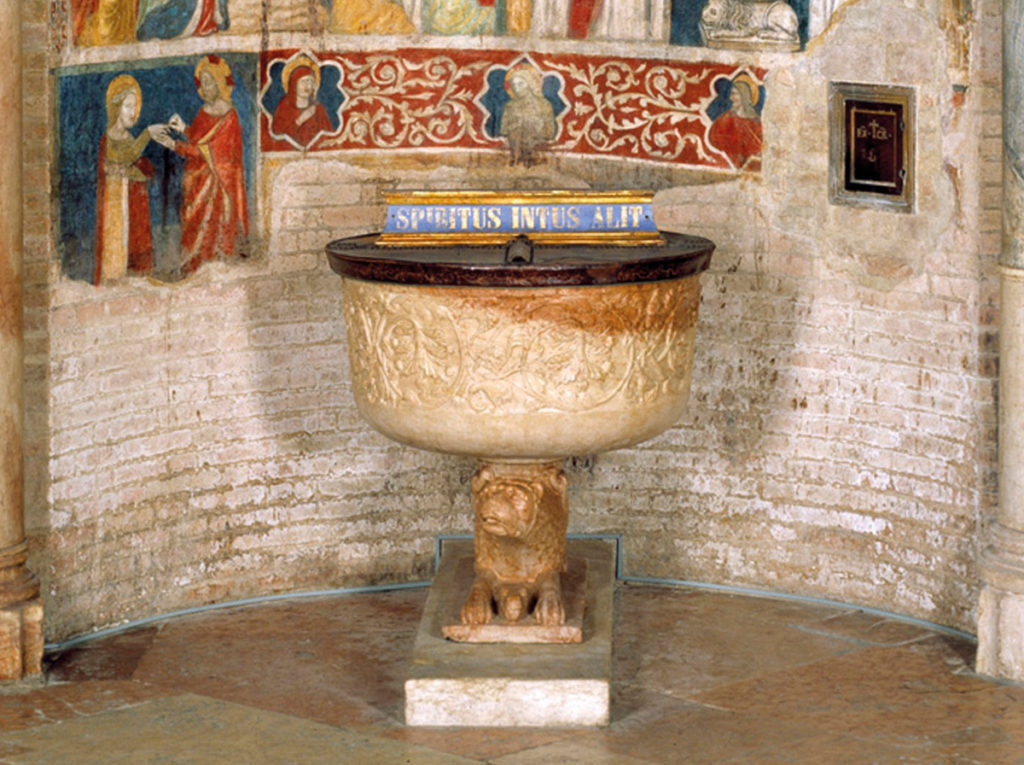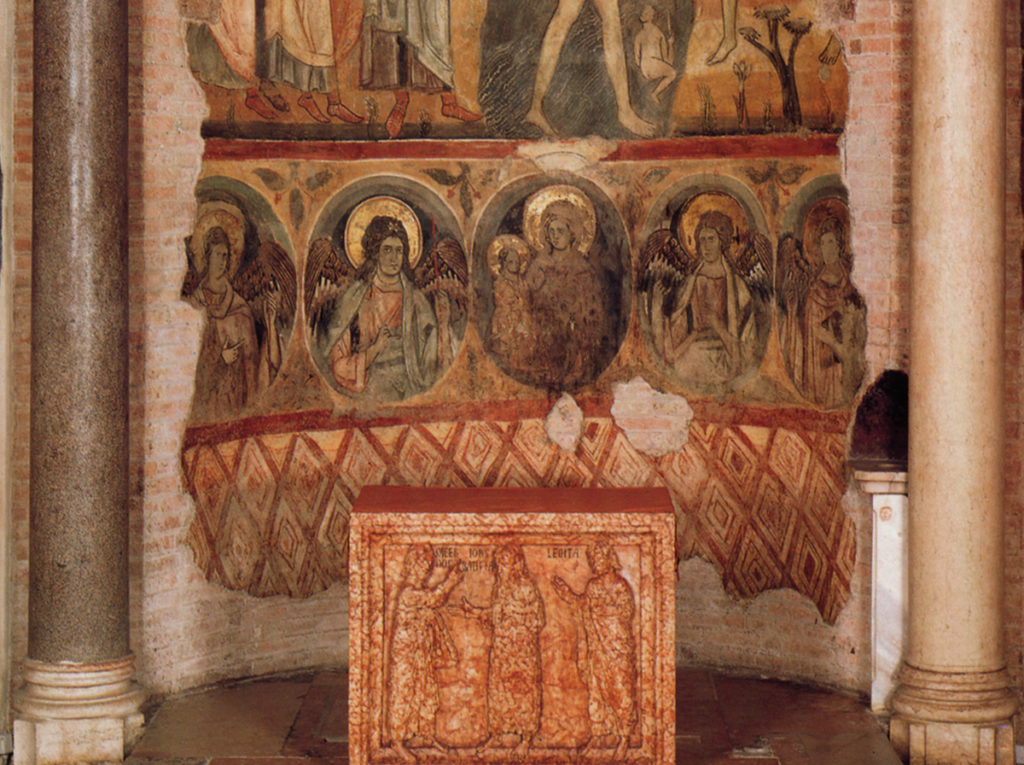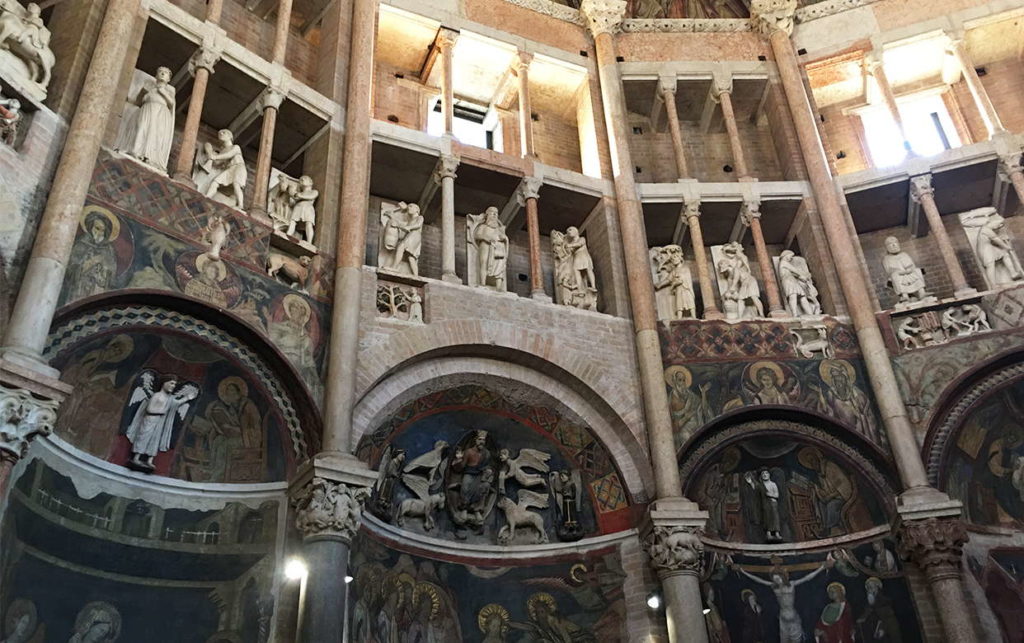Designed by Benedetto Antelami, and built between 1196 and 1216, the Baptistery of Parma is one of the most important monuments of the transition from Romanesque to early Gothic architecture. The octagonal structure, in pink Verona marble, includes four tiers of open loggias with architraved portals.
The portal of the Virgin
This is the portal that faces north and overlooks Piazza del Duomo: the Bishop used to make his solemn entrance through here.
The portal is named after the figure of the crowned Virgin, holding a flower and the blessing Child, in the lunette above it. Just underneath it, a double wave refers symbolically to Baptism. On the portal jambs, one can see two genealogical trees, describing the story of the lineage of the Messiah: Jacob‘s, which ends with Moses, foreshadowing Christ, and Jesse‘s, from whom descends Mary, Mother of Jesus. The frieze of the portal architrave shows the twelve apostles. On the architrave is engraved the name of “sculptor Benedictus” and the date of the start of construction, 1196.
Portal of the rendeemer
This is the west-facing main portal of the Baptistery: it is flanked by two jambs showing the works of mercy and the six ages of man through the parable of the vineyard.
This portal also takes its name from the content of the lunette above it, depicting the Redeemer sitting on his throne and dressed in a red tunic, symbol of his divine nature. There is also the figure of Saint Paul, which connects with the scenes on the architrave below, showing two angels blowing their trumpets to wake the dead and call them to receive their award in paradise or endless punishment in hell. The frieze above the lunette is dedicated to the twelve apostles.
Portal of the Baptist
This is the portal through which the catechumens used to enter, as they started on their journey of faith to be admitted to the Sacrament of Baptism.
The lunette depicts a devotion story of Indian origins: that of the Indian prince Josaphat who, after meeting the old hermit Barlaam, converted to Christianity. At the centre of the scene is a tree, on which a young man is intent on taking honey from a hive, heedless of a menacing dragon below, symbol of death. Two mice are gnawing at the root of the tree and at either side the sun and the moon ride in their carts, allegories of the inexorable passing of time.
The Zooforo panels
The Zooforo (zoophorus) winds all around the base of the Baptistery. It is an almost unbroken series of seventy-five panels attributed to Benedetto Antelami and his workshop.
Their subjects are symbolic and fantastical: infernal and marine monsters, centaurs, sirens, unicorns, basilisks, griffons, dogs, birds, horses and human figures. In addition to these seventy-five panels, there are four more that depict the four virtues (Chastity, Charity, Faith and Hope) and provide the key to the interpretation of the Zoophorus.
The Cupola
The cupola of the Baptistery was frescoed in the third decade of the 13th century by craftsmen from the Po river region, influenced by Byzantine iconographic models.
The vault is divided into six concentric horizontal bands: the first one (starting from the bottom) depicts scenes from the life of Abraham; the second one shows the life of John the Baptist; is the third one is glorious Christ with the Virgin and the Baptist, surrounded by a procession of prophets and kings; in the fourth one are the Apostles and the Evangelists; in the fifth one we see celestial Jerusalem with its walls, followed by the sky with the fixed stars and finally, the Empyrean, red like the colour of love. The cupola is the most significant part of the Baptistery and represents a particular example of umbrella vault, with sixteen segments extending radially from the keystone.
Niches and conches
The internal perimeter of the building is marked by sixteen niches containing important cycles of votive frescoes. The frescoes were painted in the 14th-15th centuries by craftsmen from the Emilia region such as Maestro di Gerardo Bianchi, Maestro del Trionfo della Morte, Niccolò da Reggio and Bertolino da Piacenza.
The conches connecting the niches with the open gallery display rich sculptural decoration by the Antelami school. The particularity of these conches, made from the same block of marble as the lunettes of the external portals, is that they are sculpted on both sides, thus emphasizing the iconographic symbolism of the Baptistery.
The baptismal basin
In the centre of the building stands the great octagonal basin in Verona marble, elevated on two steps that are also octagonal in shape.
It has no sculptural decorations other than the delicate outlines of its shape. The basin, which used to be filled with water for baptism by immersion, includes another smaller basin shaped as a four-leaf clover, a symbolic reference to the Cross. It was in this smaller basin that the celebrants used to stand.
The Baptismal font
A second baptismal font, located in the south-western niche, has been used for baptism by infusion since the 14th century.
The font has vegetal decoration (the tree of the Garden of Paradise), a dense interweaving of branches among which a few animals can be seen. The base of the font is a crouching lion with its prey between its paws. The lion is the symbol of Christ conquering death, while the believers raised to new life through baptism are represented by the animals living in the foliage of the Garden of Paradise.
The altar
The cubical altar in marble is located in the eastern apsidal niche.
In the front we can see John the Baptist, a Priest and a Levite pointing to the true Priest, Christ. Their gestures summarize figuratively the theological meaning of the Eucharistic table.
The months by the Antelami workshop
In the first gallery on the eastern side can be seen the 12 months and 2 seasons attributed to the Antelami Baptistery workshop, which did not quite complete the cycle, as marks of the work instruments still show. They were placed in their current location by the painters of the cupola in the fourth decade of the 13th century. In the series of reliefs of the Months one can observe an interpretative approach typical of the Antelami workshop, which sculpted the work typical of each month – a work performed by figures that even in their arduous labour bear signs of elegance and nobility, of levity and elegance in clothes – as an allegory of work redeemed by Christ.
